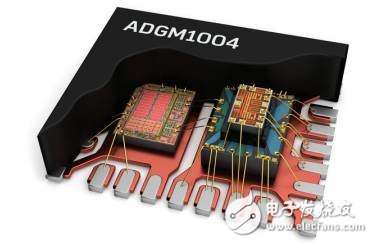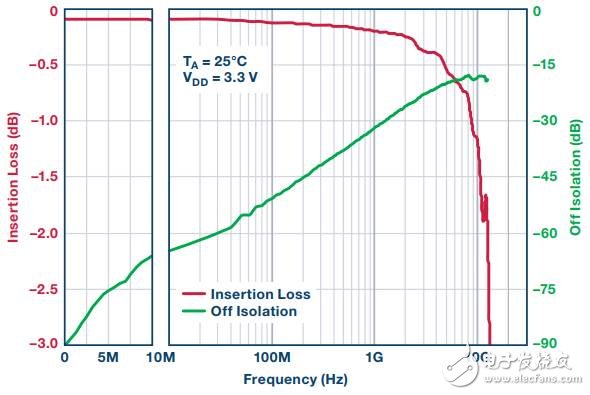Solving big problems requires groundbreaking technology. Electromechanical relays existed as early as the advent of the telegraph, but there are no alternative switching technologies to meet all market needs—especially for intelligence and connectivity in test and measurement, communications, defense, healthcare and consumer markets. Strong application requirements.
As an example of growing market demand, test and measurement end users require the smallest standard test solution to be as small as possible, with the highest parallel testing required in the frequency range of 0 Hz/dc to hundreds of GHz. Electromechanical relays have a narrow bandwidth, limited operating life, limited number of channels, and large package sizes, which are increasingly limiting system designers.
Microelectromechanical systems (MEMS) switches are innovative and can replace relays and push the industry to the next level. With state-of-the-art MEMS switch manufacturing equipment, Analog Devices is now able to mass-produce high-performance, fast, small-sized MEMS switches that feature mechanical ruggedness, low power consumption, and electrostatic discharge (ESD) protection.
MEMS switch technologyThe key to ADI's MEMS switching technology is the concept of electrostatically driven micromachined gold cantilever beam switching components. The MEMS switch can be viewed as a micro-scale mechanical relay with metal-to-metal contacts driven by high voltage DC static electricity.
Figure 1 shows a close-up view of a single MEMS switch cantilever. There are five contacts in parallel and a hinge structure with a gap below. This switch is designed for the ADGM1304 single-pole, four-throw (SP4T) MEMS switch and the ADGM1004SP4T switch with enhanced ESD protection.

Figure 1. Close-up of a MEMS cantilever switch beam
ADI has designed a companion driver integrated circuit (IC) to generate the high DC voltage required to drive the switch, ensuring fast and reliable drive and long life, and making the device easy to use.
Figure 2 shows a MEMS chip and driver IC in an ultra-small SMD QFN package. The drivers that are packaged together have very low power consumption – typically 10 mW, which is 10 times lower than the typical driver requirements for RF relays.

Figure 2. ADGM1004 Enhanced ESD Protection MEMS Switch
Integrated ESD protectionWith the ADGM1304 MEMS switch product, ADI has developed the ADGM1004 MEMS switch to enhance RF port ESD performance by integrating solid-state ESD protection. The RF port Human Body Model (HBM) ESD rating of the ADGM1004 switch has been increased to 5 kV. This level of ESD protection is the first in the MEMS switch industry.
Integrated solid-state ESD protection is a proprietary ADI technology that enables very high ESD protection while minimizing the impact on MEMS switch RF performance. Figure 3 shows an ESD protection component in an SMD QFN package. The chip is placed on the MEMS chip and connected to the RF pin of the package through a bonding wire. These are optimized for RF and ESD performance.

Figure 3. ADGM1004 driver IC (left) and MEMS switch chip (right) with RF port ESD protection chip placed over the MEMS die and wire bonded to the metal leadframe.
To implement the ADGM1004 product, ADI combines three proprietary lithography technologies with assembly and MEMS capping technology to achieve this performance breakthrough.
RF and 0 Hz/DC performanceThe advantage of MEMS switches is that they achieve 0 Hz/dc precision and wideband RF performance in a very small surface mount package. Figure 4 shows the measured insertion loss and turn-off isolation performance of the ADGM1004 single-pole, four-throw (SP4T) MEMS switch. The insertion loss is only 0.45 dB at 2.5 GHz and –3 dB at bandwidths up to 13 GHz. The RF power processing rating is 32 dBm (no compression), the third-order intercept point (IP3) linearity is constant at 67 dBm (typical) over the frequency range, and there is no performance degradation at very low frequencies.

Figure 4. ADGM1004 MEMS Switch RF Performance Linear Scale <10 MHz
The ADGM1004 MEMS switch design delivers exceptional performance for precision applications in 0 Hz/dc. Table 1 lists these important specifications.
Table 1. ADGM1004 Accuracy Specifications I

Table 1 lists the HBM ESD ratings, which are rated at 5 kV HBM, which is a significant improvement over the 100V HBM of the ADGM1304 device. This improves the ease of use of manually handling ESD-sensitive applications.
Table 2. ADGM1004 Accuracy Specifications II

Small size solutions are a key requirement regardless of market. Figure 5 compares the package design of the ADGM1004 SP4T MEMS switch with the size of a typical DPDT electromechanical relay using a physical photo. The ADGM100 is reduced in size by up to 95%.

Figure 5. Comparison of the ADGM1004 MEMS switch (four switches) with a typical electromechanical RF relay (four switches).
Finally, to help system designers, we characterized the thermal switching life of the ADGM1004 switch (switching the channel during RF power transfer). Figure 6 shows the lifetime probabilities for thermal switching of 2 GHz, 10 dBm RF signals. The average number of cycles (T50) before the failure of the sample test was 3.4 billion. For higher power test results, please refer to the ADGM1004 data sheet.

Figure 6. Lognormal failure probability at 95% confidence interval (CI) for 10 dBm RF signal hot-swap.

The groundbreaking enhanced ESD protection of the ADGM1004 MEMS switch dramatically improves ease of use while maintaining excellent switching performance in RF applications and 0 Hz/dc applications. ADI's MEMS switching technology has world-class bandwidth performance starting at 0 Hz/dc. Compared to RF relays, MEMS switches are up to 95% smaller, 10 times more reliable, 30 times faster, and 10 times lower power. . The ADGM1004 MEMS switch adds fascination to ADI's superior switching portfolio.
Iget Vape,Iget Shion,Iget Legend E-Cigarette,Iget Legend Vape
Shenzhen Uscool Technology Co., Ltd , https://www.uscoolvape.com
